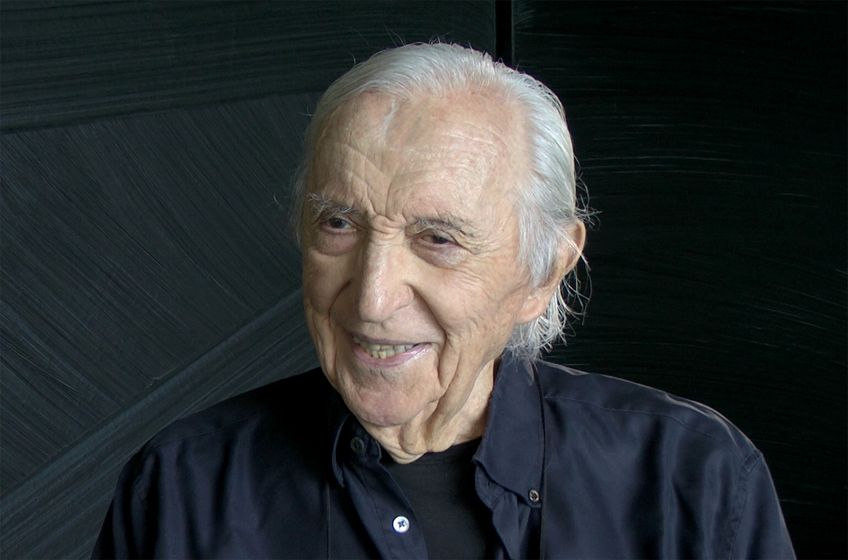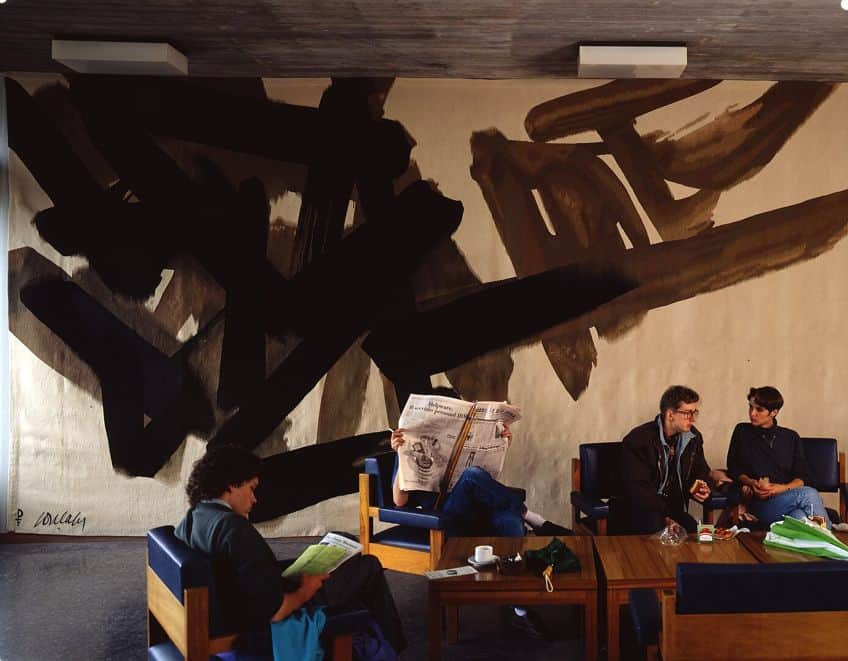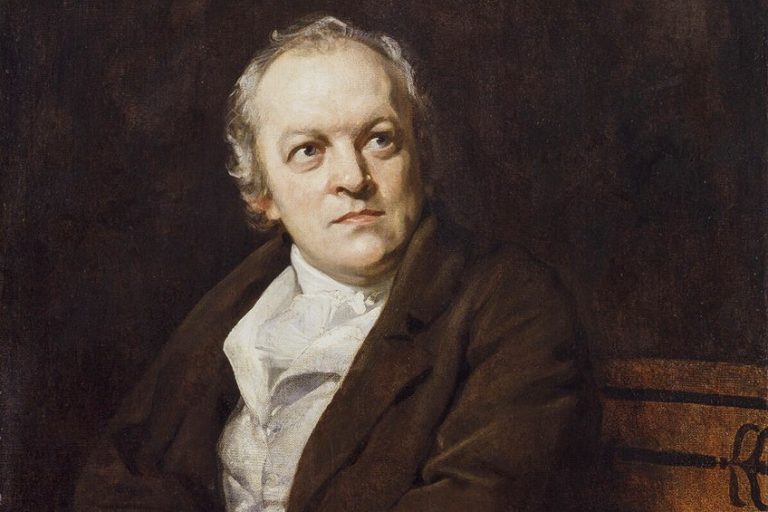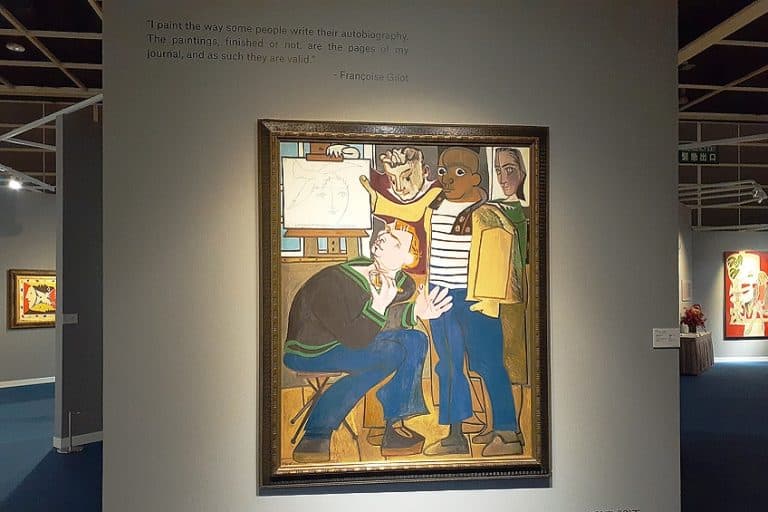Pierre Soulages – The Celebrated Postwar Abstract Artist
Pierre Soulages was perhaps one of the most prominent French painters of the 20th century, who was even recognized by President François Hollande as the “world’s greatest living artist”. Soulages’ paintings were celebrated for their impact on postwar abstraction through his exploration of the color black in its formal use. In this article, we will discover the contributions of this famous French artist and his complete biography. We will also take a look at Pierre Soulages’ paintings and unpack the development of his style. Keep reading to learn more about how this modern artist became an icon!
Painting “Ultrablack”: The Life of Pierre Soulages
Pierre Soulages was a prolific modern artist who was best known for his many black paintings, which explored themes of presence and absence in profound gestures. Soulages’ use of the color black became his signature style as he progressed from rich tones to earthy and eventually strong black.
| Artist Name | Pierre Jean Louis Germain Soulages |
| Date of Birth | 24 December 1919 |
| Date of Death | 25 October 2022 |
| Place of Birth | Rodez, France |
| Nationality | French |
| Associated Movements, Themes, and Styles | Modern art, Contemporary art, post-war abstraction, Tachisme, and action painting |
| Mediums | Painting, printmaking, and sculpture |
An internationally recognized painter, sculptor, and printmaker, Soulages’ formal use of color and legacy in post-war abstraction left a deep impact on the European art community. Below, we will examine his complete biography to uncover the trajectory of his career and artistic development, which aided his reputation and legacy. Along the way, you might find yourself confronted with questions such as “How does one establish artistic autonomy, and what does it mean to create art with no intended meaning?” We encourage you to keep reading to learn more about how Soulages approached his practice.

Early Life and Education
Born as Pierre Jean Louis Germain Soulages in 1919 in Rodez, France, Pierre Soulages lost his father quite early on in his childhood. His father, Amans Soulages, was a carriage maker and manager of a fishing and hunting store. Pierre was thus raised by his older sister and mother and had long been intrigued by the mysterious nature of the Bronze Age menhirs, along with Celtic symbols, and Romanesque architecture.
What was even more fascinating about Soulages’ childhood was that he chose to dress in all black, even though his mother disapproved of his choice.
His art education was realized in Paris at the École nationale supérieure des beaux-arts, where he was exposed to the styles of Pablo Picasso and Paul Cézanne, however, he did not stay long and chose to drop out after finding the traditional teachings quite boring. He resumed his studies later after serving in the military at the Fine Arts School of Montpellier. It was not long after that Soulages’ interest in prehistory merged with his fascination with the depths of the color black.
Early Career and Influences
Sometime between the 1930s and 1940s, Soulages established a studio in Paris, where he explored complete abstraction in painting. Here, he also experimented with walnut oil and chose black as his primary color. His first show was held in 1947 at the Salon des Indépendants while he designed theater sets on the side. Among his earliest influences in the academy were painters who strayed from the norm of traditional painting such as Cezanne and Picasso, both of whom were leaders in modern art in their own right. For Soulages, scholars suggest that he tended to not get too involved with the cultural discourse of his day, instead, his focus was on developing his abstraction and autonomy amid a politically tense period in postwar France.

In the 1940s and 50s, elements of gestural abstraction emerged in Europe and the United States, which brought a sense of liberation for artists from the political and economic state of the world. Elements of spontaneity were seen as spillages of artistic ego and transformed into a metaphor for the individual experience, searching for meaning in a postwar society. During World War II, France was occupied by the Germans and during this time, also saw the rise of abstraction that narrowed in on a single ideology. Abstract art forms were also in competition with earlier modern styles from Cubism and the influences of Communism and Social Realism. The 1950s saw the emergence of two distinct abstract art forms; lyrical abstraction and geometric abstraction, the former of which became recognized as gestural abstraction and was used by Soulages. His introduction to the Parisian art scene of 1947 was cemented in the words of Charles Estienne, a critic, who identified Soulages’ style with lyrical abstraction, humanism, and artistic autonomy.
Post-War Abstraction Paintings
Many of Soulages’ paintings demonstrate his pursuit of artistic autonomy, which was first pinpointed in a review by Estienne after Soulages’ first solo exhibition in 1949. His work was described by the critic as “rough, virile, and as having a tone that was “at once both human and concrete”. This inspired the art critic to promote the style of lyrical abstraction throughout the mid-20th century since it was the best forerunner for competing with the Americans’ Abstract Expressionism. Soulages himself chose to maintain his distance from being classified in any particular artistic group. According to statements by Soulages from an interview in 1980, he stated in response to the association of his work with gestural painting that he was against labels, but this would of course not stop his work from being associated with any particular style. For Soulages, defining himself in a set style or trend was not in the books.
To paint in this manner was simply a way of him working through a pictorial issue and as a process of production rather than a definitive art style.
His fascination and almost obsession with the color black was further cemented in his inquiries into the concept of “outrenoir”, which was backed by his pursuit of retreating to something more pure, prehistoric, and perhaps removed from connotation. His interest in the color black also stemmed from his reference to how man once lived, in grottoes and complete darkness before fire. For Soulages’ black paintings, he discovered an emotion that was elicited by the reflection of the light on the black surface of the canvas. His observations on how light could still be perceived from the black surfaces of his work were what moved him and stirred his emotions, that light could emanate from a color that innately had an absence of light.
Awards and Recognition
Soulages exhibited at many institutions around the world with his first international exposure culminating at the 1954 Venice Biennale and a show in New York City, which boosted his recognition in the United States. Before his widespread fame, Soulages held shows in 1949 at the Betty Parsons Gallery and a year later at Sidney Janis and Samuel Kootz. He also exhibited at the Solomon R Guggenheim Museum and received the title of Foreign Honorary Member of the American Academy of Arts and Letters in 1979. Additionally, he became the first living artist to receive an invitation to display his paintings at the State Hermitage Museum of St. Petersburg.

Approaching 2007, Soulages donated a selection of his work to Montpellier and held two retrospectives at the Centre National d’Art et de Culture Georges Pompidou and the Museum of Mexico City between 2009 and 2010. In 2014, Soulages established his own museum in Rodez to house around 900 donated works on permanent display and host a few temporary shows. In the same year, Soulages also exhibited newer works at the Galerie Perrotin and Dominique Lévy, which was followed by a retrospective at the Louvre Museum for Soulages’ 100th birthday celebration.
On October 25, 2022, Pierre Soulages passed away at the University Hospital of Nimes at the age of 102 in Nîmes, France.
Exploring the Formal Balance of Pierre Soulages’ Paintings
The majority of Soulages’ paintings were titled Peinture, which translates to “painting” and were required to be exhibited by hanging without frames. In his titles, he also included the artwork dimensions, followed by the date of its production. Below, we will review a few key paintings by Soulages that showcase his style and use of color.
Walnut Stain, 1959 (1959)
| Date | 1959 |
| Medium | Walnut stain wash on paper |
| Dimensions (cm) | 76 x 54 |
| Where It Is Housed | The Centre Pompidou, Paris, France |
In 1947, Soulages exhibited his first walnut-stained wash paintings to the public, which immediately drew attention from critics and made him stand out from the rest of the neo-Fauvist artists. From thick and bold strokes of deep brown to nuances of black and unapologetic marks that mimic the spirit of nature and prehistory, Pierre Soulages’ paintings and walnut series began in his childhood, when he started painting elements of trees and their branches from as early as seven years old. His early passion for abstract patterns defined by the marriage of vertical and horizontal lines gave his work a structural vibrancy that mimics the way that plants and trees create their roots and homes in their immediate environment. In Walnut Stain, 1959, one can spot the organic essence of the painting process through the meandering lines that suggest an underlying grid-like structure. It is as though the organic walnut brown washes adapt to the rigidity of the black grid.
The marks also interact with the edges of the paper, as the browns bleed and occupy the spaces where “light” is received the most.
Peinture 200 × 265 cm, 20 mai 1959 (1959)
| Date | 1959 |
| Medium | Oil on canvas |
| Dimensions (cm) | 200 x 265 |
| Where It Is Housed | Mildred Lane Kemper Art Museum, St. Louis, Missouri, United States |
One of Pierre Soulages’ paintings at the Mildred Lane Kemper Art Museum titled Peinture 200 × 265 cm, 20 mai 1959, reflects Soulages’ system of working through process and material. The simple format of titling his works as paintings with their physical properties invites a sense of objectivity and heightened awareness of the materiality and visual characteristics that the work brings. In a way, the titles function in a way similar to that of letters of the alphabet, understood in their basic forms through calligraphic markings, which when removed from words, becomes an abstract and solitary symbol. Soulages’ paintings therefore stand in resistance to interpretation and while they are not tied to any known language in terms of their markings, they are understood solely through the dynamism of their appearance, texture of paint application, and the emotional depth of their colors. This strong resistance to conforming to a narrative was Soulages’ way of maintaining his autonomy in an art world that seeks labels and transparency.
His “limitation” imposed on the painting is focused solely on the process of painting, as nothing more and nothing less.
Peinture 195 x 130 cm, 4 août 1961 (1961)
| Date | 1961 |
| Medium | Oil on canvas |
| Dimensions (cm) | 195 x 130 |
| Where It Is Housed | Private collection |
In 2021, this famous Soulages painting sold for $20.2 million in auction, which set a new record for Soulages. The rich hues and the large scale of the painting were further enriched by Soulages’ gestural mark-making approach, which strongly communicates the notion of oppositions, contrast, and calligraphic use of line. Soulages’ painting is abstract yet its key use of color and bold confident gestures make it a powerful piece. Soulages created his paintings using large house-painting brushes, palette knives, and tools with straight edges to enable him enough room to express motion and gesture while producing dynamic brush strokes and patterns. The abstraction of color complemented by gestural lines makes his work unique in that it relays Soulages’ understanding of color and form, which makes his work almost sculptural.

Recognized as a leader of “Ultrablack” painting, Pierre Soulages’ paintings, his early fascination with the color black, and the process of painting as a way to establish his autonomy have resonated with many artists. Soulages’ career also appears quite straightforward in the way the artist navigated the modern trends of his era, while choosing to maintain his stance of non-meaning in visual art. One can therefore ask important questions such as, “What does it mean to not represent or depict in art, does ‘artistic autonomy’ truly exist, and what does the presence and absence of color convey?” when considering Soulages’ artworks.
Frequently Asked Questions
Who Was Pierre Soulages?
Pierre Soulages was a famous French painter, sculptor, and printmaker, who was widely known as the painter of non-representative abstract art. These paintings were known as ultra-black paintings, which were based on Soulages’ fascination with the color black and the notion of non-color and its relationships to space, materiality, form, calligraphy, and process.
Where Was Pierre Soulages From?
Pierre Soulages was born in the city of Rodez, which is located in the Occitanie region of southern France. Much of his artistic inspiration emerged from his childhood encounters with prehistoric art and Celtic symbols. In 2014, he also established his own museum in Rodez called the Musée Soulages.
What Art Style Was Pierre Soulages Known For?
Pierre Soulages was recognized for his unique approach to abstract art and gestural painting. In the 1940s, his art was also closely associated with a genre of abstract art called lyrical abstraction. Soulages’ paintings reflected his interest in the color black as both a representation of color and of space or non-color. His style was characterized by bold hues painted in striations and grid-like patterns. Soulages’ painting was also described as calligraphic and dynamic since they were produced with motion, and were associated with the post-Cubist abstraction style from the School of Paris.
Jordan Anthony is a film photographer, curator, and arts writer based in Cape Town, South Africa. Anthony schooled in Durban and graduated from the University of the Witwatersrand, Johannesburg, with a Bachelor of Art in Fine Arts. During her studies, she explored additional electives in archaeology and psychology, while focusing on themes such as healing, identity, dreams, and intuitive creation in her Contemporary art practice. She has since worked and collaborated with various professionals in the local art industry, including the KZNSA Gallery in Durban (with Strauss & Co.), Turbine Art Fair (via overheard in the gallery), and the Wits Art Museum.
Anthony’s interests include subjects and themes related to philosophy, memory, and esotericism. Her personal photography archive traces her exploration of film through abstract manipulations of color, portraiture, candid photography, and urban landscapes. Her favorite art movements include Surrealism and Fluxus, as well as art produced by ancient civilizations. Anthony’s earliest encounters with art began in childhood with a book on Salvador Dalí and imagery from old recipe books, medical books, and religious literature. She also enjoys the allure of found objects, brown noise, and constellations.
Learn more about Jordan Anthony and the Art in Context Team.
Cite this Article
Jordan, Anthony, “Pierre Soulages – The Celebrated Postwar Abstract Artist.” Art in Context. January 8, 2024. URL: https://artincontext.org/pierre-soulages/
Anthony, J. (2024, 8 January). Pierre Soulages – The Celebrated Postwar Abstract Artist. Art in Context. https://artincontext.org/pierre-soulages/
Anthony, Jordan. “Pierre Soulages – The Celebrated Postwar Abstract Artist.” Art in Context, January 8, 2024. https://artincontext.org/pierre-soulages/.










